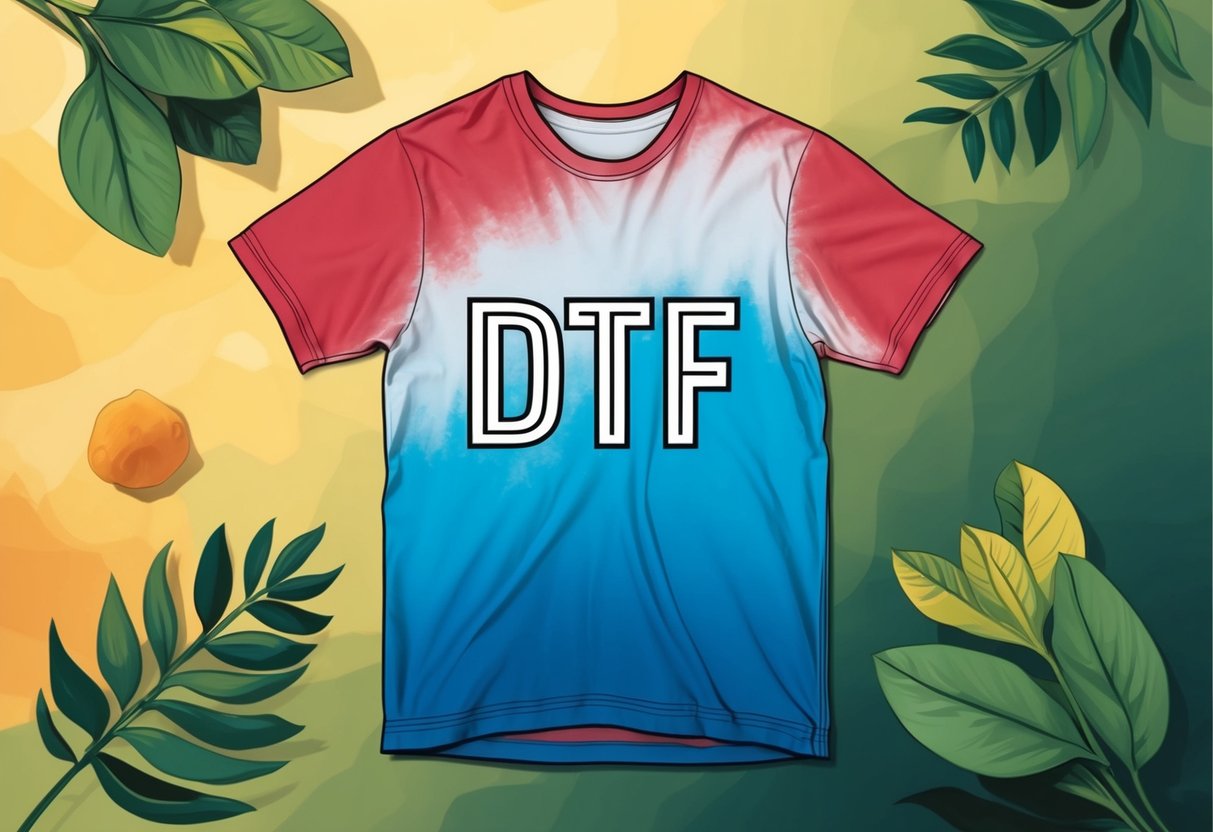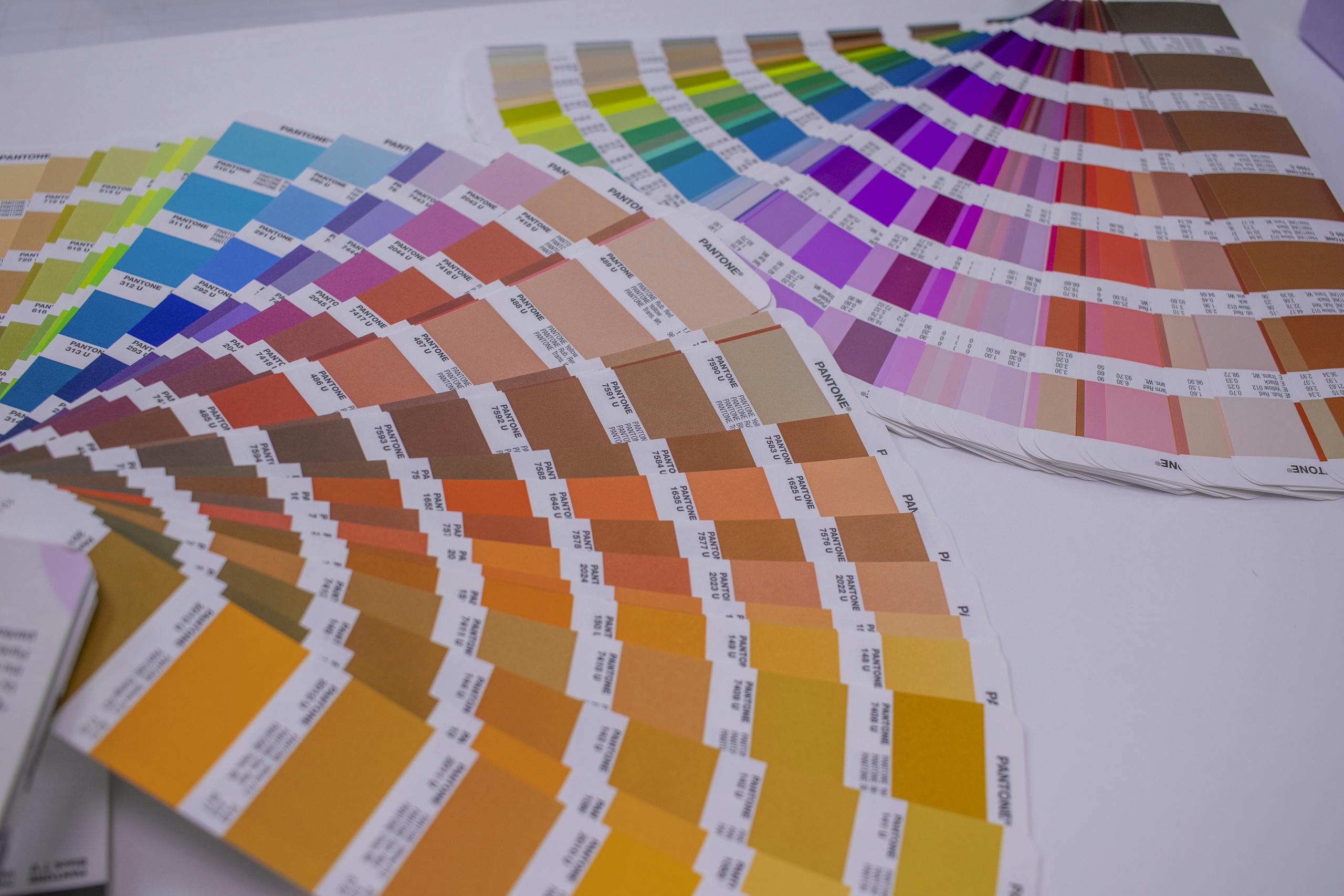When you’re thinking about using Direct To Film (DTF) transfers, you might wonder about their durability. A well-made DTF transfer can last between 50 to 100 washes. This makes them a reliable choice for creating long-lasting and vibrant designs.
Table of contents
- Understanding DTF Transfers
- The Durability of DTF Transfers
- Preparation and Application Process
- Material Considerations for DTF Transfers
- Ensuring Quality and Vibrance
- Maintenance and Care
- Environmental Impact on DTF Transfer Life
- Custom Apparel and DTF Printing
- Technical Insights into DTF Printing
- Frequently Asked Questions
DTF transfers are popular because they resist cracking, fading, and peeling, much like traditional screen printing. Their durability comes from high-quality materials and the right care techniques, which help maintain the vibrancy and detail of the prints over years of use.
Whether you’re customizing a t-shirt or any other fabric, knowing how long the designs will last is crucial. With DTF transfers, you can be confident that your creative expressions will persist, offering both resilience and vibrancy.
Understanding DTF Transfers

DTF, or Direct-To-Film, is a cutting-edge printing technology. It offers vibrant prints on various fabrics and stands out compared to other popular methods.
Defining DTF Technology
DTF transfers use specialized films, powders, and inks to create high-quality prints. You print the design on a film, sprinkle it with a fine adhesive powder, and heat it. This process ensures your final print is both vibrant and durable.
DTF transfers are popular because of their ability to work on a wide range of materials, like cotton, polyester, and blends. Their standout feature is the transfer process that allows intricate designs to retain detail and color vibrancy.
Longevity is another key benefit. With proper care, DTF prints can last dozens of washes without significant fading. This durability makes them ideal for detailed and colorful designs.
DTF vs. Other Printing Methods
When comparing DTF to other printing methods like screen printing, vinyl, sublimation, and direct-to-garment (DTG), each has its strengths. Screen printing offers long-lasting prints but works best on fewer colors.
Vinyl provides a raised texture but isn’t ideal for detailed designs. Sublimation excels on polyester but doesn’t work well on cotton. DTG offers high detail but may lack vibrancy on certain fabrics.
DTF stands out by providing the versatility to work with various fabrics and the ability to handle complex designs with ease. It also combines the durability of screen printing with the detail of DTG, making it a preferred choice for many.
The Durability of DTF Transfers

DTF transfers are known for their impressive durability and long-lasting designs. With optimal care and correct application, these transfers can withstand numerous washes while keeping their vibrant appearance.
Factors Affecting DTF Transfer Longevity
Application: Proper heat press settings are crucial. Use the right temperature, pressure, and time to ensure strong adhesion. Incorrect settings can lead to peeling or fading.
Material Quality: The quality of the film and fabric impacts the transfer’s lifespan. Higher-quality materials generally provide better results and longer-lasting prints.
Care and Maintenance: Routine washing and drying play a significant role in durability. Using mild detergents and avoiding harsh chemicals help maintain the design’s integrity over time.
Lifespan of DTF Transfers Under Optimal Conditions
When well-maintained, DTF transfers can last between 50 to 100 washes, outlasting many other printing methods. This longevity greatly depends on adhering to recommended washing practices, like using cold water and avoiding high-heat drying.
Proper Handling: Turn garments inside out before washing to minimize friction on the print. Avoid overloading the washing machine to prevent damage to both clothes and transfers.
Preparation and Application Process
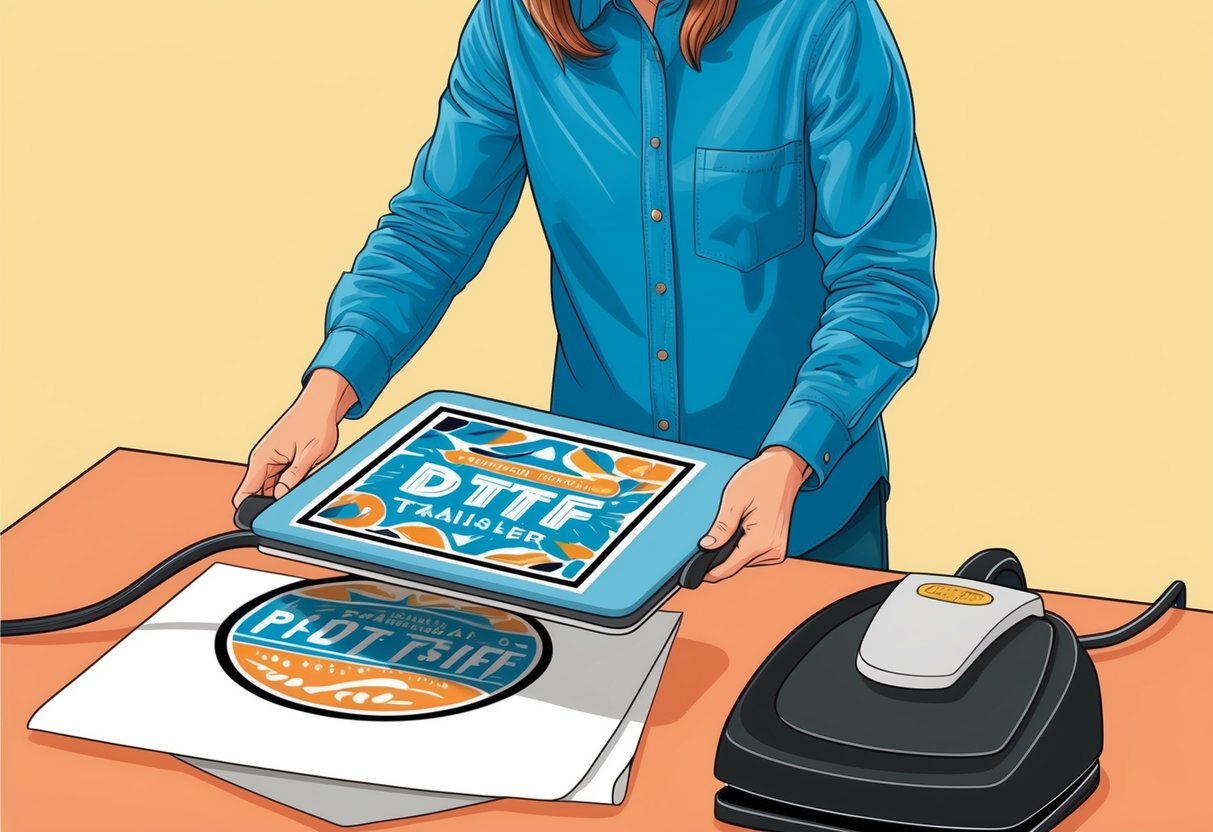
Understanding the preparation and application of DTF transfers ensures the final result is long-lasting and vibrant. Choosing the right materials and mastering the application process are crucial steps in achieving high-quality transfers.
Material Selection for DTF Prints
Choosing the right materials is vital for successful DTF prints. Start with high-quality transfer films and ensure you have proper adhesive powder. An adhesive powder that melts evenly will stick better to the fabric.
Fabric choice also plays a key role. Make sure the fabric is DTF-compatible and can withstand the heat press process. Fabrics like cotton, polyester, or blends work well.
Having the correct materials ensures that your transfers will adhere properly, offering durability and vibrant prints.
Application Process of DTF Transfers
The application process involves several precise steps for quality results. Begin by printing your design in reverse on DTF film. Apply adhesive powder to the wet ink and cure it using heat to melt the powder onto the film.
Next, align the transfer on the fabric and use a heat press to apply it. Adjust the heat, pressure, and timing based on the fabric type and transfer needs to ensure proper adhesion.
Peel the film after pressing to reveal your design. These steps are vital for ensuring your DTF transfers are applied correctly and last through many washes.
Material Considerations for DTF Transfers
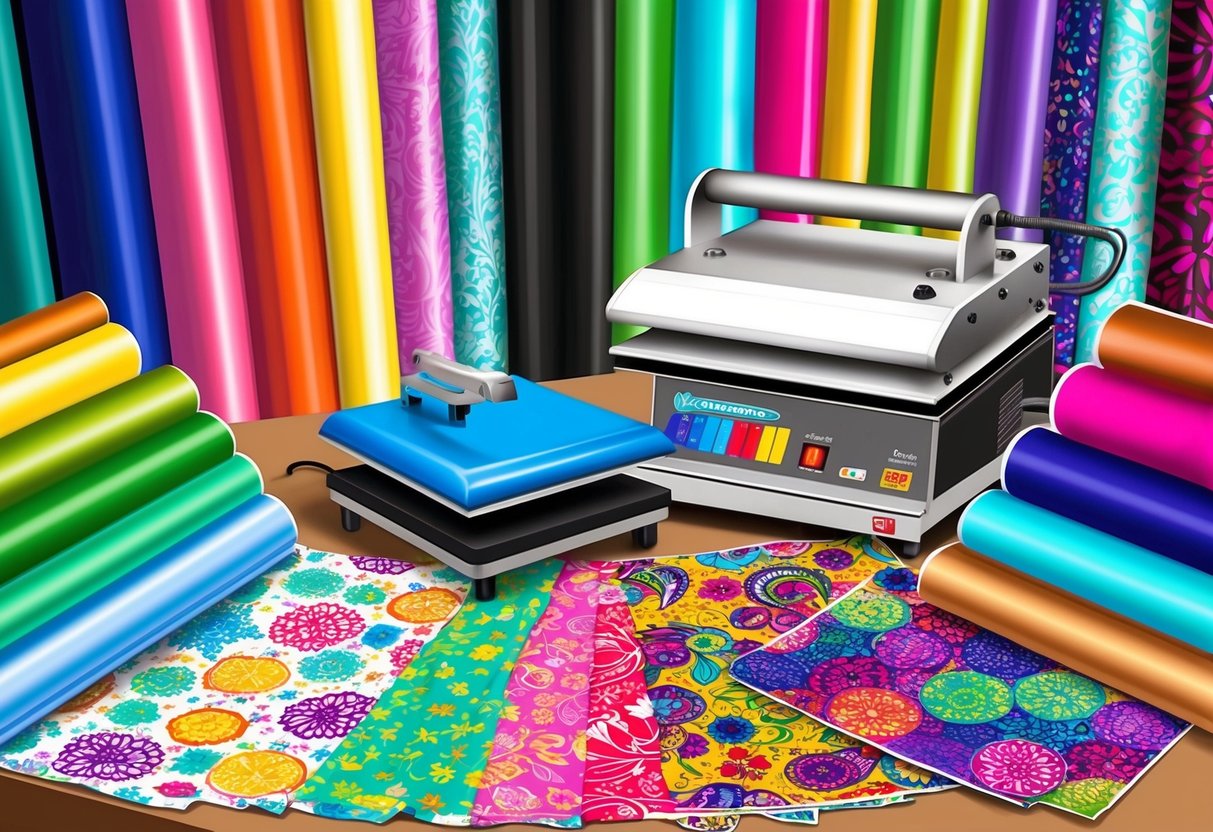
Choosing the right fabric is crucial for the longevity and appearance of DTF transfers. Different fabrics can greatly impact how a transfer adheres and lasts over time.
Natural vs. Synthetic Fibers
When it comes to DTF transfers, both natural and synthetic fibers have their pros and cons. Cotton, a popular natural fiber, offers excellent breathability and comfort. Transfers on cotton often look vivid and hold up well. However, they might show wear sooner with frequent washing.
Polyester, a common synthetic fiber, is less absorbent but more resistant to shrinking and wrinkling than cotton. This makes it ideal for maintaining the transfer’s clarity and structure. Synthetic fibers generally provide a more durable base for DTF transfers. Blended fabrics can also work well, balancing the benefits of both fiber types.
Impact of Fabric Selection on Transfer Longevity
The fabric type you choose plays a significant role in how long a DTF transfer lasts. While cotton offers comfort, it may require careful washing to keep the transfer looking fresh. Delicate fabrics can show wear earlier as they might not withstand heavy use or rough washing.
On the other hand, polyester, being more rugged, may hold up better over time. Fabric selection affects not just the appearance but also the lifespan of your transfer. Selecting a fabric suited to the DTF process will enhance durability and keep the design intact through numerous washes.
Ensuring Quality and Vibrance

Creating long-lasting and vibrant DTF transfers involves careful choices in materials and techniques. By selecting the right films and learning how to produce bright colors, your prints will maintain their detail and appeal over time.
Materials and Films Used in DTF Printing
Using high-quality films is key to achieving durable DTF transfers. These films, along with suitable inks and powders, form the foundation of a strong print.
The type of film you choose affects how well the colors adhere. Ensure that your film is compatible with your fabric type for optimal results. Durable films can help your transfers withstand repetitive washing without losing quality.
Look for films specifically designed for DTF printing to ensure optimal performance. They must be able to handle heat and pressure effectively when applied, reducing the risk of peeling or fading.
Achieving Vibrant Colors and Prints
To achieve vibrant colors and designs, pay attention to your ink and heat settings. Quality inks designed for DTF printing will produce bright, eye-catching prints.
Experiment with different color profiles to find the one that best suits your needs.
The right balance of temperature, pressure, and timing during the heat press process plays a crucial role in maintaining the color’s vibrancy.
Applying these settings correctly helps the ink bond well with the material, ensuring bright, clear prints that last. Adjustments may be needed depending on garment type.
Following print care instructions can also help maintain color brightness and prevent fading.
Maintenance and Care

To keep your DTF transfers looking vibrant and to maximize their lifespan, it is essential to follow certain care and maintenance steps. Proper washing and handling are key for reducing wear and tear over time.
Washing and Care Instructions
When caring for DTF transfers, turn garments inside out before washing. This minimizes friction between clothes and reduces the chance of peeling or cracking. Use cold water and a gentle wash cycle.
Avoid using bleach or fabric softeners, as these can harm the print. For drying, air drying is preferable to maintain brightness and detail. If you must use a dryer, opt for a low heat setting. High heat can damage the transfer, causing cracks and fades.
Tips for Extending the Life of DTF Prints
To extend the life of your DTF prints, store garments properly. Keep them in a cool, dry place away from direct sunlight. Exposure to sunlight and extreme heat can cause the design to fade over time.
Handle the garments with care, especially when ironing. Use a low heat setting and place a cloth between the iron and the transfer to protect the print. Regularly inspect and follow these steps to keep your DTF designs in great condition, allowing them to last longer.
Environmental Impact on DTF Transfer Life

Environmental factors such as direct sunlight and heat can affect the longevity of DTF transfers. The adhesion properties and the conditions in which the transfers are maintained also play a vital role in their durability.
Effects of Direct Sunlight and Heat
Direct sunlight can lead to the fading of colors in DTF transfers. UV rays can cause the material and inks to degrade over time. To minimize the impact, you can store garments in shaded areas, keeping them away from windows where sunlight is strong.
Excessive heat can also be detrimental. High temperatures might weaken the adhesive strength of the transfer. Heat transfer vinyl (HTV) could peel off or crack if constantly exposed to heat sources. Ensuring garments are stored in cool, dry places helps prolong the transfer life.
Adhesion Properties and Environmental Conditions
The adhesion properties are crucial for the transfer’s longevity. The adhesive used in DTF transfers needs to bond well with the fabric to withstand environmental conditions like humidity and temperature fluctuations.
High humidity can cause the adhesive to weaken, leading to potential peeling. Materials with strong adhesion properties are more resilient and maintain their grip even under challenging conditions. Keeping garments in controlled environments, where temperature and humidity are stable, is important to ensure the adhesion remains effective. Regular monitoring of these conditions can significantly increase the life of the transfer.
Custom Apparel and DTF Printing
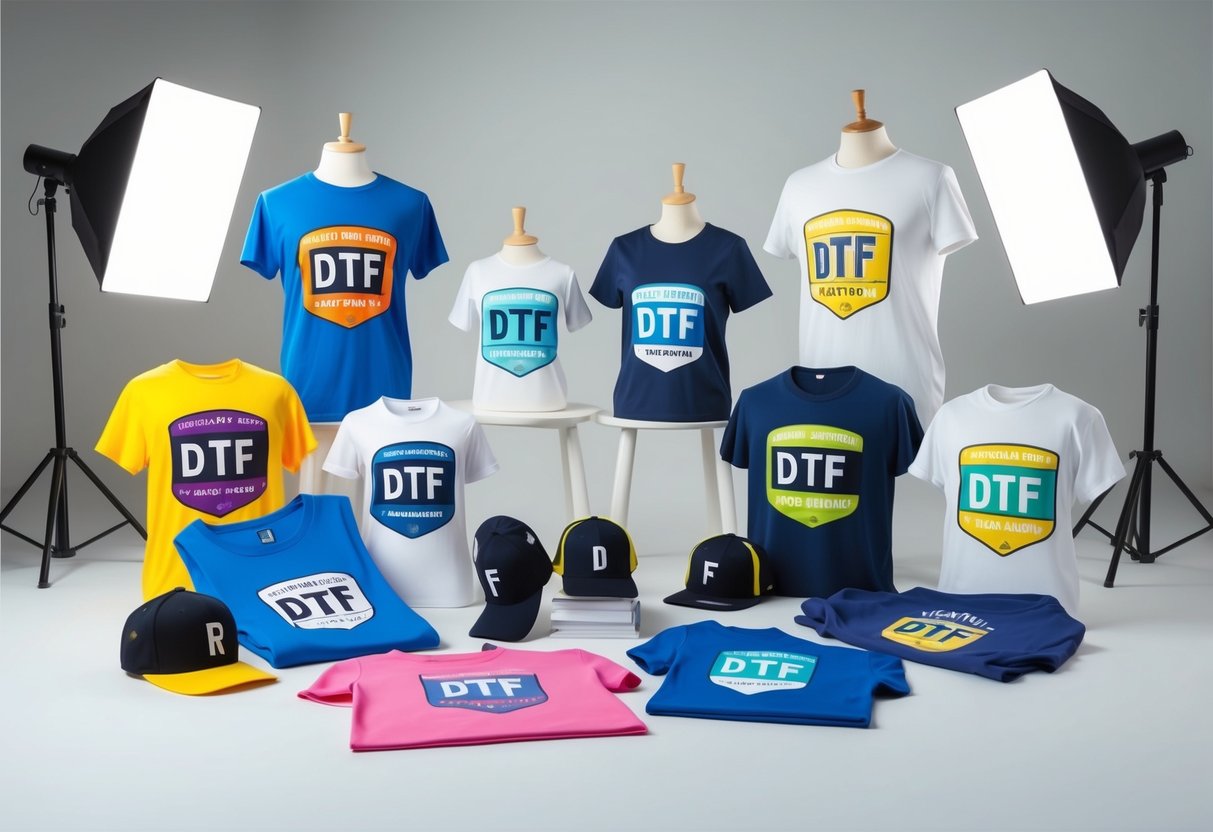
Direct to Film (DTF) transfers are popular in custom apparel due to their versatility and durability. With a DTF printer, you can produce vibrant designs on various textiles.
Leveraging DTF for Custom Apparel
Custom apparel benefits greatly from DTF printing because it allows you to apply designs to different fabric types. DTF transfers offer a wide color range and are resistant to cracking and peeling.
Using high-quality DTF film is crucial for achieving crisp, lasting images. This printing method works well for small businesses seeking customization options. Designs retain their vibrancy even after numerous washes, making them suitable for both personal and commercial projects.
Innovations in Fabric Printing Techniques
Fabric printing continues to evolve, offering new possibilities in custom apparel. DTF technology stands out due to its ability to create detailed prints without sacrificing durability. Innovations in printing techniques help you achieve sharper images and more accurate color reproduction on various garments.
Direct-to-film transfers adapt well to different materials, making them a flexible choice. By staying updated on the latest advancements, you can choose the best methods for your needs. The adaptability of DTF printing opens doors for creative expression and growth in custom apparel design. As a result, you can deliver high-quality, personalized garments that stand out in the marketplace.
Technical Insights into DTF Printing

Understanding the technical aspects of DTF printing can greatly enhance the quality and longevity of prints. Key focuses include the adhesive powder used and the specifications of the heat press machine.
Understanding the Role of Adhesive Powder
Adhesive powder plays a vital role in DTF printing. It ensures the transfer sticks properly to the fabric.
Selecting the right adhesive powder is crucial for achieving durable and vibrant prints. Adhesive powder is typically applied after the ink. It provides a bonding layer between the film and the fabric.
The quality of this powder affects how well the print holds up after washing and wearing. Using high-quality adhesive helps in creating a strong bond. This minimizes chances of peeling or fading. The uniformity of the powder layer, with consistent thickness, also impacts the transfer’s longevity. Always follow manufacturer instructions for best results.
Heat Press Machine Specifications
The heat press machine you use for DTF printing significantly impacts the final product. It’s important that the machine maintains consistent temperature and pressure settings during printing.
Different fabrics might require different settings. Therefore, a machine with adjustable temperature and pressure controls is beneficial.
Reliable machines often provide precise control, ensuring even heat distribution. Key specifications to consider include the machine’s platen size, temperature range, and pressure options. These influence how efficiently and uniformly the heat transfers the design onto the garment. A well-maintained machine contributes greatly to the longevity and quality of the print. Regular maintenance and calibration ensure optimal performance over time.
Frequently Asked Questions

DTF transfers are known for their long-lasting prints and vibrant colors. Key factors like fabric type, washing, and storage conditions can impact their lifespan and performance.
What is the lifespan of DTF transfers when applied to t-shirts?
DTF transfers can last between 50 to 100 washes on t-shirts, provided they are cared for properly. This includes following recommended washing and drying guidelines to maintain print quality and longevity.
How does the durability of DTF transfers compare to traditional screen printing?
DTF transfers are quite durable and can match the resistance of traditional screen printing when it comes to cracking, fading, and peeling. Both methods provide reliable prints that withstand regular use.
What are the best practices for storing unused DTF transfers?
To preserve unused DTF transfers, store them in a cool, dry place away from direct sunlight. Keeping them flat or rolled without creases can prevent damage and ensure optimal performance when applied.
Can DTF transfers outlast vinyl in terms of wear and tear?
Yes, DTF transfers often outlast vinyl due to their ability to adhere strongly to various fabrics. Their resistance to cracking and peeling makes them a preferred option for long-lasting wear, especially on frequently washed garments.
What factors affect the longevity of DTF prints on various fabrics?
Factors such as fabric type, wash temperature, and drying methods can influence DTF print longevity. Using mild detergents and avoiding high heat are recommended to maintain their vibrant appearance and durability over time.
How well do DTF prints withstand regular washing and drying?
DTF prints handle regular washing and drying exceptionally well. Specific care instructions, like washing inside out and using lower heat settings, can further enhance their durability. This will keep them looking fresh for years.

